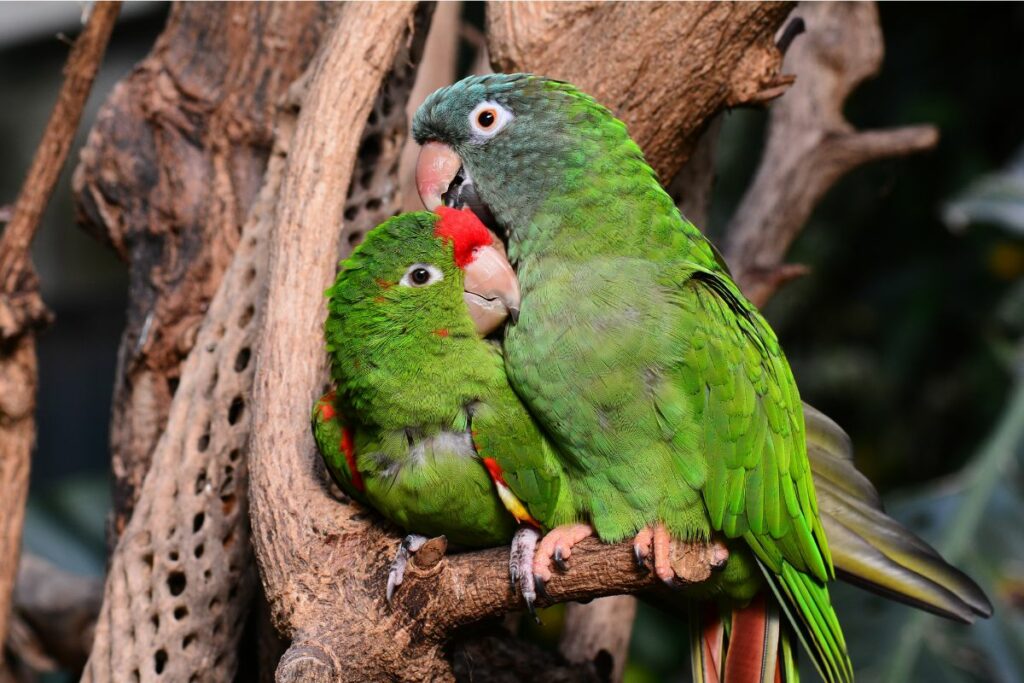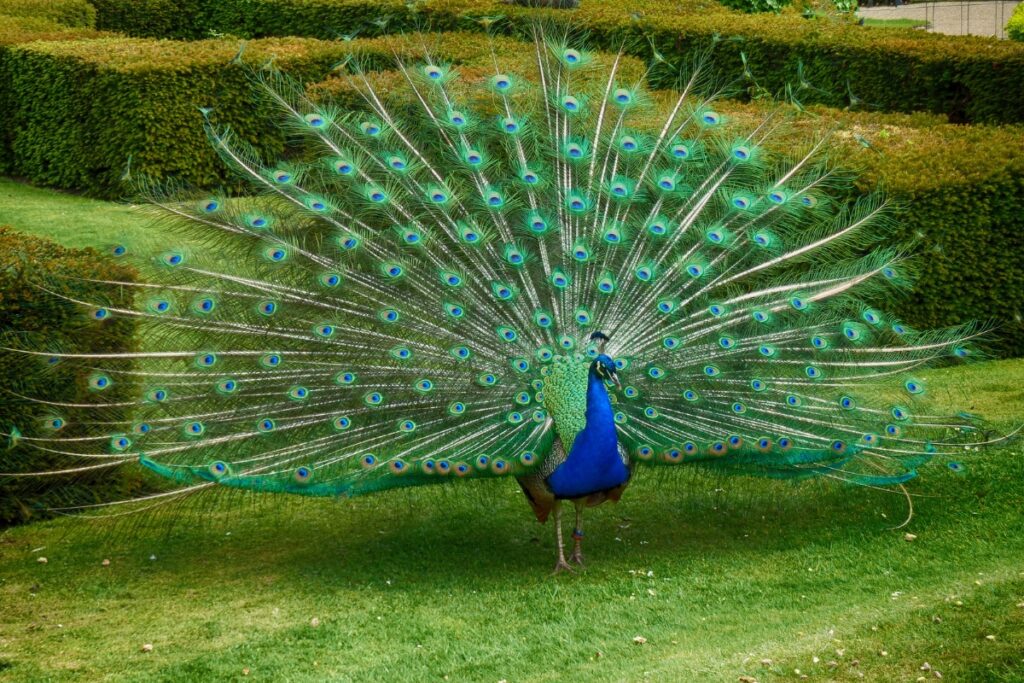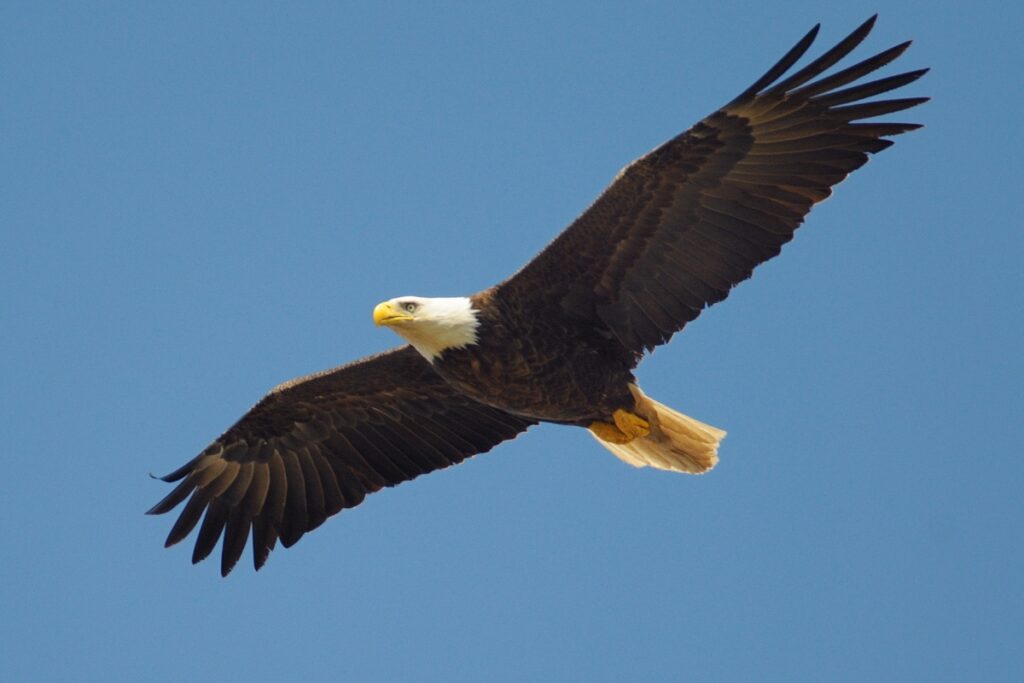As an Amazon Associate, we earn from qualifying purchases with no additional costs for you.
Birds may occur in pairs or groups. It is important that birds recognize other birds of their own species and identify other species. You may be curious about exactly how birds can recognize other birds.
Birds recognize each other by sights, sounds, and coloring and markings on the plumage. Songs, calls, and behavior allow birds to recognize their own species, while calls, shapes, colors, and sizes enable birds to recognize avian predators. Behavioral cues include courtship rituals and flock dynamics.
These multifaceted signals cause birds to identify and interact with one another in different ways, fostering social bonds and facilitating mate selection. Read further to learn how birds recognize each other and why this is significant to their biology and survival.
TIP: If you want to check out the best pair of binoculars for bird watching, we recommend a pair of waterproof and fog-proof 8 x 42 binoculars like the Celestron – Outland X 8×42 Binoculars (Amazon link).
How Do Birds Recognize Each Other?
Birds likely use a combination of sound and sight to recognize each other. There are species-specific plumage coloring and markings, calls, and songs. A bird must correctly identify its own species to find a mate and reproduce.
Plumage Markings
The colors of the feathers and certain markings are used by birds to identify if what they are seeing is another bird of the same or different species. Since birds can see more colors than us, including parts of the UV spectrum, the exact colors they see are unlikely to be identical to what we see.
It is also important to understand that coloring is due to pigment, but not always. In some cases, coloring is actually from how the light rays are reflected.
Camouflage
The coloring of the birds is used to attract a mate but also can function as camouflage. Female birds often have duller colors than males and may look quite different (sexual dimorphism). This is so that the females are less visible when in the nest. This cryptic coloration is important for many bird species.
Sometimes, both sexes may be cryptically colored, for instance, American Bitterns. These birds live among the reeds. Their brown coloring with stripes helps them blend in with the reeds. They also may stand perfectly still, easily invisible to predators.
TOP TIP: Birds wings are very different. Each species has a different type of wing adapted to its needs. This article explains what these wing types are. Discover our list of the 10 most beautiful birds throughout the world here.
Attracting A Mate
Several species of birds show sexual dimorphism, and the males will often have displays that serve to advertise themselves. They may puff up their feathers or even engage in hopping or flight behaviors to help attract a mate.
Birds may also display colors, combined with postures and calls, for territory defense. For instance, the Red-winged Blackbird males defend good territory to attract as many females as possible. The Red-winged Blackbird is a polygamous species. In other words, the male mates with several females.
Watch this video of the mating rituals of the Red-winged Blackbird:
Outside of the breeding season, the males of many birds molt out of their breeding colors and begin to resemble the females and juveniles of the species. For instance, American Goldfinch males no longer have the yellow coloring in winter. This is also the case for birds in Africa like the Red Bishop, Village Weavers, and Fan-tailed Widow birds.
Courtship Dances And Calls
Birds may combine their coloring with dancing. There are several Birds of Paradise that display their coloring and dance to attract a mate.
This video shows an odd courtship dance of a Bird of Paradise:
Courtship dances are often combined with mating calls or songs. For example, the Greater Sage Grouse male will walk around fanning his tail feathers, pushing his chest out, and calling:
There are many other examples of birds that do a courtship dance.
The African Emerald Cuckoo has a particular call and, instead of a dance, presents the female with a big, juicy caterpillar.
Many of the cuckoos found in Africa call loudly and consistently throughout the breeding season. The calls are very distinctive, can be heard from quite a distance away, and are species-specific. The male cuckoos are often brightly colored and easily recognized by humans and their own species.
Flight Display Patterns
Some bird species have specific courtship flights that they can combine with calls to attract a mate. The Zitting Cisticola is such a species.
This little bird is brown and small, but he puts on an impressive flight, which he combines with a display call. This small bird can be seen flying and calling over grassland and open savanna in hopes of attracting a female.
Several of the grassland birds have courtship flights. The Pin-tailed Whydah is another such species. He has a special flight display he does to attract a female.
He also grows a long tail and molts into his handsome black and white feathering in the breeding season. Outside of the breeding season, he resembles the female of the species with a brown striped appearance and short tail.
TIP: Check out my recommended products if you are looking for the best and trusted equipment for birdwatching in the wild or on your backyard (Amazon link):
- Celestron Outland X 8×42 Binoculars
- Celestron Ultima 80 Angled Spotting Scope
- National Audubon Society Birds of North America Book
- Design Free-standing Bird Bath
- Smart Bird Feeder with Camera
- Cedar Bird House for Outside
Recognizing Avian Predators
It is essential that birds recognize members of their own species for reproductive means, but it is also crucial that they recognize a bird predator.
Eagles and hawks will prey on birds. Some species are particularly good at hunting and preying on smaller birds. In North America, it is not uncommon for a Sharp-shinned Hawk to catch small birds, even at bird feeders.
In South Africa, the Sparrowhawks are very adept at catching birds, even in thick forests. African Harrier Hawks are also bird predators and have long legs to pull chicks out of nests.
It is important, then, that smaller birds recognize these predators. The combination of size, shape, colors, and calls can help birds to identify a predator and take cover.
Out in the open, falcons can be seen hunting birds on the wing. Birds seeing such a predator usually give out an alarm call that other birds (even of a different species) recognize. The birds then dive for cover and will remain silent and still until the danger has passed.
There are a few rules or guidelines you should abide by as an ethical birder. These are listed below.
- Do not enter private lands without prior permission from landowners.
- Follow all the rules in refuges and reserves, including cleaning up any garbage from your campsite.
- Do not disturb birds on nests.
- Do not use apps and play songs to call up birds when they are hungry, tired, and breeding during spring and summer.
Conclusion
Birds can recognize each other by visual cues of coloring and markings. They also can recognize the songs and calls of their species and particular behaviors, whether that be a dance, specific posturing, or flight.
Recognition is important for reproduction, so the bird chooses the right mate. It is also important that birds recognize avian predators so they can take steps to prevent being preyed on by hawks, sparrowhawks, falcons, and eagles.



